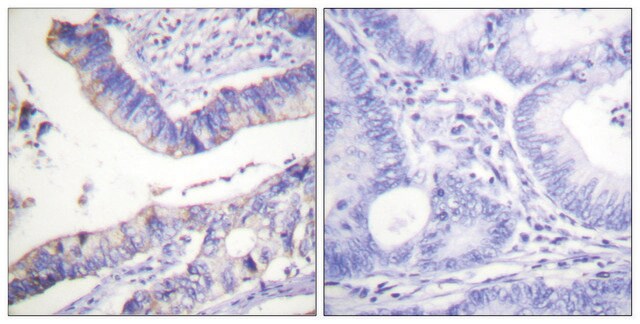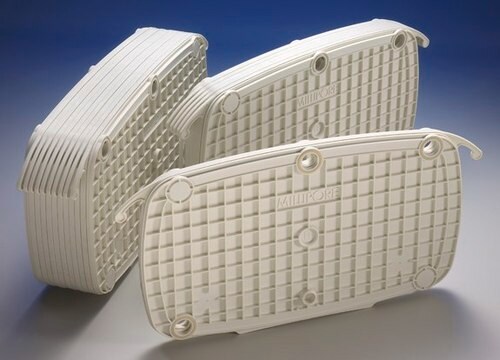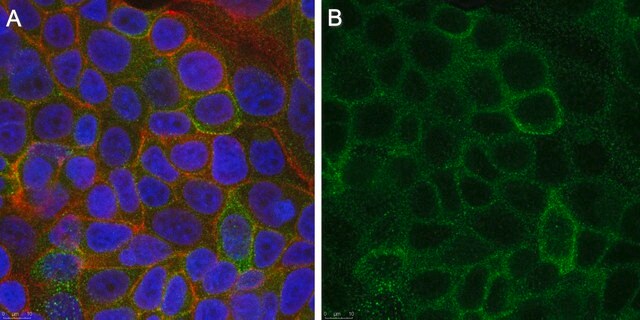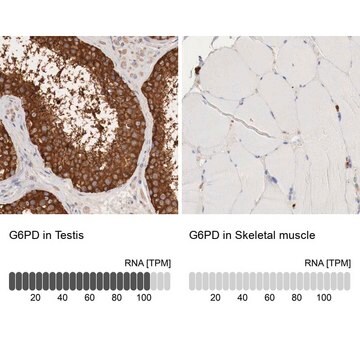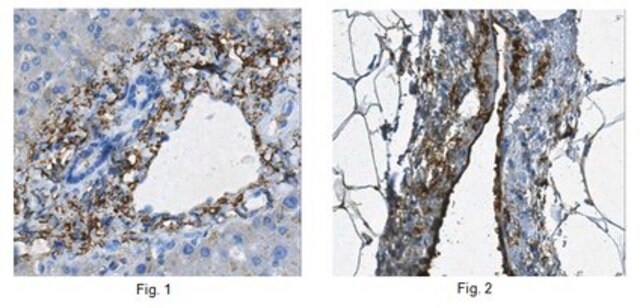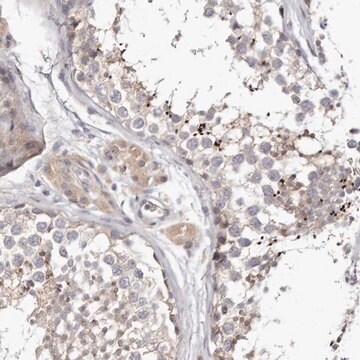MABS2233
Anti-Intestinal Villus Antibody, clone B6A6
Sinônimo(s):
Intestinal crypt cells
About This Item
Produtos recomendados
fonte biológica
rat
Nível de qualidade
conjugado
unconjugated
forma do anticorpo
purified antibody
tipo de produto de anticorpo
primary antibodies
clone
B6A6, monoclonal
purificado por
using protein G
reatividade de espécies
mouse
embalagem
antibody small pack of 100 μg
técnica(s)
flow cytometry: suitable
immunohistochemistry (formalin-fixed, paraffin-embedded sections): suitable
Isotipo
IgG2aκ
sequência de epítopo
Unknown
nº de adesão de ID de proteína
nº de adesão UniProt
Condições de expedição
ambient
modificação pós-traducional do alvo
unmodified
Descrição geral
Especificidade
Imunogênio
Aplicação
Isotype testing: Identity Confirmation by Isotyping Test.
Isotyping Analysis: The identity of this monoclonal antibody is confirmed by isotyping test to be mouse IgG2a .
Tested Applications
Flow Cytometry Analysis: A representative lot detected Intestinal Villus in Lgr5-GFP mouse intestinal cells ( Data courtesy of Prof. Melissa Wong, Ph.D., Oregon Health & Science University, Portland, Oregon USA).
Immunohistochemistry Applications: A representative lot detected Intestinal Villus cells in Immunohistochemistry applications (Wang, F., et al. (2013). Gastroenterology. 145(2): 383-95.e1-21).
Flow Cytometry Analysis: A representative lot detected Intestinal Villus in Flow Cytometry applications (Wang, F., et al. (2013). Gastroenterology. 145(2): 383-95.e1-21; Smith, N.R., et al. (2017). Cell Mol Gastroenterol Hepatol. 3(3): 389-409; Yan, K.S., et al. (2017). Cell Stem Cell. 21(1):7 8-90.e6; Smith, N.R., et al. (2018). Cell Mol Gastroenterol Hepatol. 6(1): 79-96).
Note: Actual optimal working dilutions must be determined by end user as specimens, and experimental conditions may vary with the end user
forma física
Armazenamento e estabilidade
Outras notas
Exoneração de responsabilidade
Não está encontrando o produto certo?
Experimente o nosso Ferramenta de seleção de produtos.
Código de classe de armazenamento
12 - Non Combustible Liquids
Classe de risco de água (WGK)
WGK 1
Certificados de análise (COA)
Busque Certificados de análise (COA) digitando o Número do Lote do produto. Os números de lote e remessa podem ser encontrados no rótulo de um produto após a palavra “Lot” ou “Batch”.
Já possui este produto?
Encontre a documentação dos produtos que você adquiriu recentemente na biblioteca de documentos.
Nossa equipe de cientistas tem experiência em todas as áreas de pesquisa, incluindo Life Sciences, ciência de materiais, síntese química, cromatografia, química analítica e muitas outras.
Entre em contato com a assistência técnica
